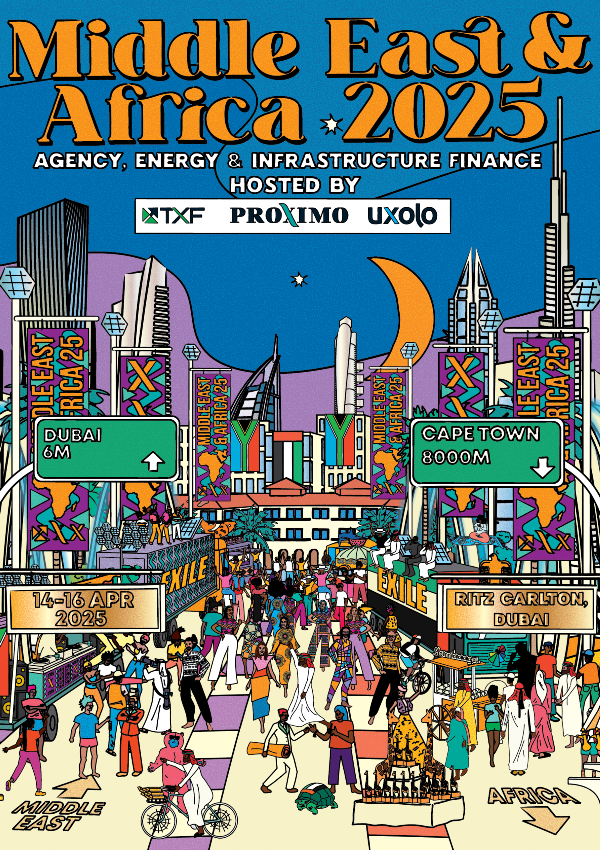Lack of trade finance continues to hit SMEs badly
Latest reports indicate that the global trade finance gap stands at $1.5 trillion. Jonathan Bell reviews the scene and questions why so much more isn’t being done to improve the situation.

Yesterday, the Asian Development Bank (ADB) released its latest Trade Finance Gap, Growth, and Job Survey which revealed that the global trade finance gap – i.e. what is required to finance global trade and what is actually being made available by financiers – stands at $1.5 trillion. Yes, this is an astronomical figure, but for many of us it is nothing new; this figure has been around this mark for a number of years.
In its sixth edition, the report is the world’s leading barometer of trade finance health. Whether this report is new to you or not, the trade gap is obviously still shocking. Shocking that after years of QE in certain regions/markets, various governments pumping up the banks so that they can supposedly support and service more SMEs etc, the improvements on transparency within trade, advancements made in digitisation, initiatives to help bring new investors into trade finance, the rise of fintechs, development of trade platforms, and the concept of the use of blockchain/DLT within trade finance etc, that we, collectively as an industry, are still not reducing this gap and getting more finance to those companies to further international trade goals.
Great strides have, of course, been made by some including institutions such as the ADB to try to help reduce this, as much of it relates to trade in Asia-Pacific. However, much more is needed by parties across the board and across the globe. And let’s not forget that according to the WTO between 80% - 90% of global trade relies on trade finance – so what happens in reducing the gap is massively important. Unfortunately, the current trade wars that are contributing to this age of uncertainty certainly do not help the situation in any way. Despite this backdrop, we must all encourage change and try to define paths to move forward positively.
As the ADB says, this stubbornly high global trade finance gap is holding back efforts to deliver vital jobs and growth amid ongoing economic uncertainty. The ADB’s latest report notes that SMEs face the biggest challenges obtaining trade finance.
Commenting on the findings, Steven Beck, head of ADB’s trade and supply chain finance, says: “The huge trade finance gap is a global challenge that shackles economic growth and harms efforts to reduce poverty. Given the uncertain economic outlook, it is critical that more efficient, stable, and sustainable trade finance channels are created to spur global growth and development.”
And here is largely the key – efficiency, stability and sustainability. Efficiency in trade finance can be driven by greater transparency, consistency in terminology and documentation, less discrepancies, increased digitisation and overall speed in delivery in all channels. Better regulation will help in trade finance by attracting new investors it is hoped – but that regulation should not be so heavy-handed or misguided to prevent financiers from lending. However, efficiency is certainly not helped in the supply chain by large corporations changing their terms of payment to suppliers and sub-contractors. Extending the terms of payment – which is an abhorrent practice – can have a drastically negative effect on an SMEs cashflow and their ability to secure working capital in the market.
Stability can be massively helped by consistency from providers, in particular the commercial banks - many of whom are jumping in and out of who they will or will not finance. Much of this has resulted from over regulation and the banks’ interpretation of this. Many banks have run back to what they call ‘core’ clients, but in such an economically disrupted world who is really the ‘core’ anymore? Compliance has run riot within most commercial banks to the point where a new SME simply cannot get a look in, and even existing SME clients won’t find finance for new markets because of ‘risk appetite’ and people sitting in credit that know little about the client, market in question, the industrial sector and overall risk. It is no wonder that some areas of structured trade finance are crumbling when bankers cannot get past the ‘deal blockers’ within their own banks.
Sustainability is the new buzz word within financing, and trade is rising to the challenges this presents. Most developments in this quarter are recent. Cosmetic sustainable measures are much fewer today as financiers (and corporates) realise that such failure to adopt sustainability measures will come back and bite them. And this sustainability is spreading throughout the trade finance spectrum – whether it be supply chain finance, commodity finance or export credit agencies (ECA)-backed financings. Such is the development that we are seeing a much greater uptake in sustainable financing from the commodity finance community, where there is a much greater realisation that everybody is in the spotlight. Now, finally, many producers and commodity traders are trying to make sustainability part of their DNA.
Back on the ADB’s Trade Finance Gap, Growth, and Job Survey, it should be noted that it casts a wide net and is based on responses from banks, firms, and ECAs globally.
According to the report, 45% of trade finance applications by surveyed SMEs are rejected, compared to 39% for mid- and larger-sized firms and 17% for multinational corporations. The rejection rate for women entrepreneurs, meanwhile, is 44% compared to 38% for male-owned firms. The ADB says that providing better access to trade financing for SMEs and businesswomen will not only narrow the gap but also empower them to contribute to inclusive growth and sustainable development.
In addition, some 76% of the banks surveyed reported that anti-money laundering (AML) and know-your-customer (KYC) regulations are major obstacles to expanding their trade financing operations. The ADB comments that while these regulations are crucial to ensure the global financial system is not used to fund terrorism or launder money, they can inadvertently cut off legitimate companies in less-developed markets from the financial support they need to grow.
Beck adds: “An extreme example is the Pacific islands, where some countries risk being cut off from the global financial system - including trade finance - due to correspondent banks severing relationships with local financial institutions.”
Unfortunately, the ADB also says around 60% of responding banks expect the trade finance gap to increase over the next two years. Technologies such as blockchain and big data have the potential to narrow the gap, but their take-up is compromised by high cost and a lack of global standards for digital finance. The report recommends adoption by governments of common rules on digital trade and e-commerce to give firms and banks legal grounds to transact digitally. It also notes that legal entity identifiers would help address AML/KYC concerns by applying a unique electronic 20-digit identifier for legal entities participating in financial and commercial transactions.
As mentioned above, the ADB has probably done more than any other development bank to try to help SMEs with trade finance through its Trade Finance Programme (TFP). Backed by ADB's AAA credit rating, the TFP provides guarantees and loans to over 200 partner banks to support trade, enabling more companies throughout Asia-Pacific to engage in import and export activities. Since 2009, ADB’s TFP has supported more than 15,000 SMEs across developing Asia - through over 21,000 transactions valued at over $36 billion - in sectors ranging from commodities and capital goods, to medical supplies and consumer goods. In 2018, the TFP grew almost 40% to support $6.2 billion in trade through 4,470 transactions.
Earlier this year, BNY Mellon and the International Chamber of Commerce (ICC) released the results of a global survey which took place between April 2018 and January 2019 entitled: ‘Overcoming the Trade Finance Gap: Roots, Causes and Remedies’. The survey approached global bankers, specialist trade providers, regional and domestic banks and other industry participants asking questions related to the reasons for the trade gap and how the situation could be improved.
In its summary the authors noted that: “Although credit was cited as an issue (for trade finance rejection), our survey supports existing findings that compliance costs are a key—though by no means the sole contributor—to the volume of rejected trade finance transactions. Of particular note, our findings also revealed that trade finance rejection rates accelerated in a third of institutions surveyed during the previous year. This is a worrying trend and emphasises the very real need for effective action to help narrow the gap—and ensure it doesn’t widen further.
“Participants identified two potential solutions as equally important: regulatory revision and technology, with respondents highlighting the value of centralised know your customer (KYC) databases in particular with respect to how technology could help. The survey also investigates what could most effectively help to drive regulatory revision, and the role of correspondent banks in helping to close the gap.”
Some of the key findings in the survey were:
- Trade finance transaction rejection rates are increasing in a third of institutions;
- Compliance constraints were reaffirmed as the primary contributor to trade finance rejections;
- Technology and regulatory revision are priority solutions;
- Enhanced transparency and efficiency are needed to help drive more trade finance to markets with high levels of unmet demand;
- Risk sharing partnerships with global banks ranked top for creating additional financing capacity;
- Regulator and bank alignment is key.
The authors also noted: “Our survey reconfirms the ongoing issue of the trade finance gap. It is imperative that we continue to seek and implement the means to enable businesses to connect effectively to international value chains and help global trade to realise its full potential.”
And speaking to TXF, one market participant at the cutting edge, Atul Khekade, co-founder of TradeFinex based in Singapore, which makes use of new blockchain technology, comments: “As per the survey of financial institutions, the causes can be simplified as non-standardisation of data standards in KYC, credit and trade instruments which make it difficult for financial institutions across borders to work with each other. Forex risks and lack of a secondary liquidity market in trade as an asset class is a further contributor to lack of liquidity.”
He explains: “TradeFinex.org makes use of the hybrid blockchain platform of XinFin to provide standardisation and digitisation of KYC, credit and trade instruments that work on a decentralised yet enterprise friendly platform. The Stablecoin to nostro-Vostro bridge frees up capital for financial institutions and helps them mitigate forex risks better. The built-in secondary markets exchange creates more liquidity around the trade assets connecting alternative asset investors and real money clients to participate in bridging the liquidity GAP.”
On the overall use of DLT within trade finance, he also notes: “Blockchain provides trust which is lacking in cross jurisdiction trade. Lack of trust us the reason why multiple parties can't come together and work on standardised practises and finance infrastructure. Blockchain allows standardisation between parties, counterparty risk mitigation, transparency, liquidity and settlement yet at the same time providing privacy and decentralisation which essentially means that no single entity is in control of your data, customers and finance to take wrong advantage of it.”
Any tools and all tools will be required to help reduce the huge global trade finance gap – and while it is still very early days, DLT will eventually be one of these tools much more widely employed within certain parts of global trade finance provision.
Now time to get up to speed on the markets.
Here's our exclusive TXF Essentials subscriber content
TXF Global: Petroperu's ECA experience
TXF spoke with Petroperu’s vice chairman, Hernan Barros, to discuss the company’s debut ECA-backed financing with CESCE for the Talara oil refinery, with further fundraising plans potentially on the cards for a second deal with the Spanish ECA.
Commodity report for H1 2019 shows drastic drop in volumes
Overall volumes of global commodity trade financing fell by almost 30% according to the TXF H1 2019 Commodity Report. Jonathan Bell reviews this drastic drop and assesses whether it is simply a portrait of volatile commodities and market trends or more far-reaching influences impacting global business.
TXF Global: AXA XL on mergers and risk mitigation
Joe Blenkinsopp, global head of market development and distribution for political risk, credit & bond insurance at AXA XL, a division of AXA, talks to TXF from the sidelines of TXF Global Berlin, about being part of the XL Catlin-AXA merger. He discusses the consolidation and the healthy state of the private insurance market.
Plus, to top things off...
the news you thought you had but didn't.
EPC bids near for Cultana hydro project
Energy Australia will take final EPC contract bids for its its A$500 million ($340.5 million) Cultana pumped hydro energy storage project in South Australia on...
More details on acquisition loan for Chilean LNG facility
Investment fund manager Ameris Capital has signed a $193.5 million acquisition financing for a 37% stake in the Chilean Mejillones LNG facility from...
Brazil's Viracopos airport offers take shape
On 1 October, lenders backing Aeoportos Brasil Viracopos (ABV) – a joint venture between UTC Participacoes (45%), Triunfo Participacoes (45%) and Egis (10%) – will vote on the future of the Brazilian Viracopos airport….
John Laing eyes stake in Ruta del Cacao highway
Sponsors of the Ruta del Cacao highway project in Columbia – Cintra, Ferrovial, Colpatria and Ashmore – are expected to sell down a 30% interest in the scheme to infrastructure investor John Laing Group for around $75 million.
Cambodian solar scheme opens financial bids
State-owned Electricite du Cambodge (EDC), with advisory from ADB, has opened the financial bids from the 19 qualified bidders for the 60MW Chhnang/Speu solar PV phase I project in Cambodia.
Teresina's pubic lighting PPP bids in
Seven consortia have submitted bids for the development of a public lighting PPP project for Teresina in Brazil. Consortia that presented offers include…
RFQs due for Belarus' M10 PPP upgrade
The transport and communications ministry for Belarus are expected to receive RFQ bids by the end of this month (31 August) for the country's M10 motorway…
UK's Neart na Gaoithe offshore wind deal nears close
EDF Renewables signed a tightly priced debt package this month to finance the construction of the £2 billion ($2.4 billion) 450MW Neart na Gaoithe offshore wind farm...





